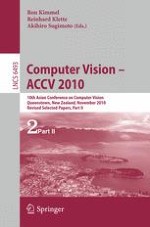The four-volume set LNCS 6492-6495 constitutes the thoroughly refereed post-proceedings of the 10th Asian Conference on Computer Vision, ACCV 2009, held in Queenstown, New Zealand in November 2010. All together the four volumes present 206 revised papers selected from a total of 739 Submissions. All current issues in computer vision are addressed ranging from algorithms that attempt to automatically understand the content of images, optical methods coupled with computational techniques that enhance and improve images, and capturing and analyzing the world's geometry while preparing the higher level image and shape understanding. Novel geometry techniques, statistical learning methods, and modern algebraic procedures are dealt with as well.
